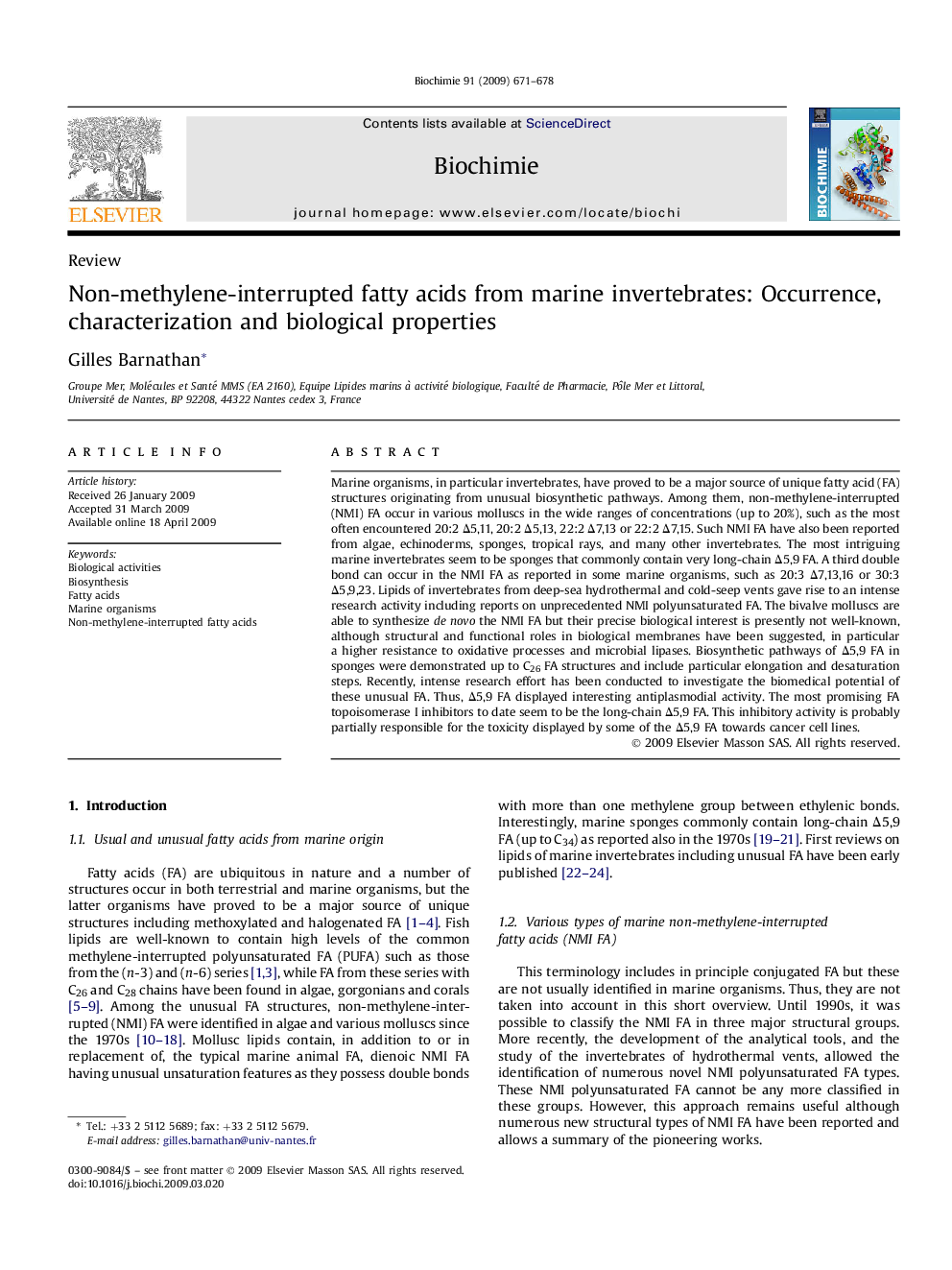| Article ID | Journal | Published Year | Pages | File Type |
|---|---|---|---|---|
| 1953052 | Biochimie | 2009 | 8 Pages |
Marine organisms, in particular invertebrates, have proved to be a major source of unique fatty acid (FA) structures originating from unusual biosynthetic pathways. Among them, non-methylene-interrupted (NMI) FA occur in various molluscs in the wide ranges of concentrations (up to 20%), such as the most often encountered 20:2 Δ5,11, 20:2 Δ5,13, 22:2 Δ7,13 or 22:2 Δ7,15. Such NMI FA have also been reported from algae, echinoderms, sponges, tropical rays, and many other invertebrates. The most intriguing marine invertebrates seem to be sponges that commonly contain very long-chain Δ5,9 FA. A third double bond can occur in the NMI FA as reported in some marine organisms, such as 20:3 Δ7,13,16 or 30:3 Δ5,9,23. Lipids of invertebrates from deep-sea hydrothermal and cold-seep vents gave rise to an intense research activity including reports on unprecedented NMI polyunsaturated FA. The bivalve molluscs are able to synthesize de novo the NMI FA but their precise biological interest is presently not well-known, although structural and functional roles in biological membranes have been suggested, in particular a higher resistance to oxidative processes and microbial lipases. Biosynthetic pathways of Δ5,9 FA in sponges were demonstrated up to C26 FA structures and include particular elongation and desaturation steps. Recently, intense research effort has been conducted to investigate the biomedical potential of these unusual FA. Thus, Δ5,9 FA displayed interesting antiplasmodial activity. The most promising FA topoisomerase I inhibitors to date seem to be the long-chain Δ5,9 FA. This inhibitory activity is probably partially responsible for the toxicity displayed by some of the Δ5,9 FA towards cancer cell lines.
